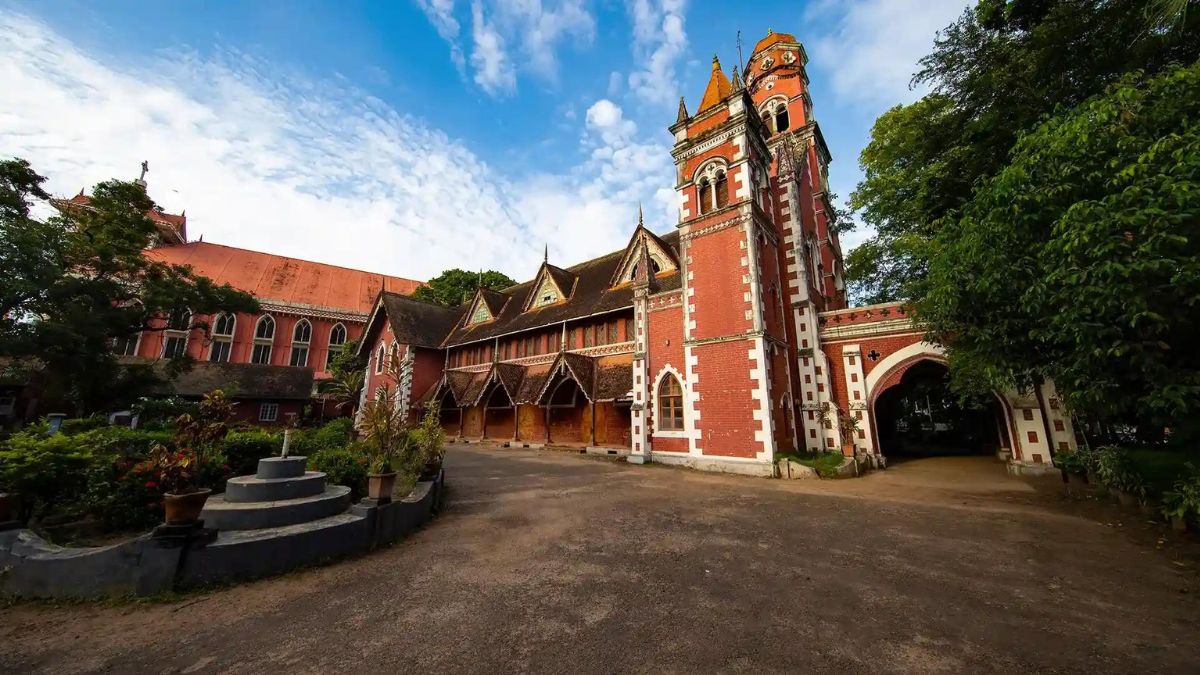Thiruvananthapuram, the capital city of Kerala, is renowned for its rich cultural heritage, ancient temples, and colonial history. While popular sites like the Padmanabhaswamy Temple and Kuthiramalika Palace attract many visitors, several lesser-known heritage gems lie in the city's vicinity.
If you’re a heritage enthusiast, here are four off-the-beaten-path places around Thiruvananthapuram that you should visit:
1. Koyikkal Palace
Located in Nedumangad, about 18 kilometres from the Thiruvananthapuram Central railway station, Koyikkal Palace is a hidden treasure showcasing traditional Kerala architecture. Built in the 17th century by Umayamma Rani of the Venad Royal Family, this two-story palace is a fine example of the region’s wooden construction techniques and intricate craftsmanship.
 Koyikkal Palace | Kerala Tourism
Koyikkal Palace | Kerala Tourism
The palace houses two museums: the Folklore Museum and the Numismatics Museum. The Folklore Museum displays traditional musical instruments, household utensils, and artefacts reflecting Kerala’s cultural heritage, while the Numismatics Museum features a collection of rare and ancient coins from the Chera, Chola, and Pandya dynasties, dating back to as early as the 5th century BC.
2. Anchuthengu Fort
Situated approximately 32 kilometres from Thiruvananthapuram city, Anchuthengu Fort (also known as Anjengo Fort) is a coastal remnant of colonial history. Built by the British East India Company in 1696 and completed in 1699, it was the first permanent British settlement on the Malabar Coast. The fort played a significant role in the trade of pepper and cotton cloth and later served as the first signalling station for ships arriving from Britain.
 Anchuthengu Fort or Anjengo Fort | Kerala Tourism
Anchuthengu Fort or Anjengo Fort | Kerala Tourism
During the 18th century, Anchuthengu Fort was crucial in the Anglo-Mysore Wars, functioning as an ammunition storage site for British forces. Its location along the Arabian Sea offers stunning views, and the nearby Anchuthengu Beach adds to its charm. Its historical significance as a trade outpost and its serene, less-touristy ambience make it a must-visit for heritage enthusiasts.
3. Palm-Leaf Manuscript Museum
The Palm-Leaf Manuscript Museum in Thiruvananthapuram is a unique cultural and historical treasure trove. Billed as the world’s first palm-leaf manuscript museum, it is housed on the ground floor of a three-century-old complex at Fort Area, which currently functions as the Central Archives under the state government.
 Palm-Leaf Manuscript Museum | Kerala Tourism
Palm-Leaf Manuscript Museum | Kerala Tourism
The museum showcases a collection of 187 unique manuscripts written on cured and treated palm leaves. These manuscripts cover a wide range of topics, including financial, administrative, and cultural records, as well as historical events such as battles against European colonizers.
Also Read
The collection is displayed across eight galleries: ‘History of Writing,’ ‘Land and People,’ ‘Administration,’ ‘War and Peace,’ ‘Education and Health,’ ‘Economy,’ ‘Art and Culture,’ and ‘The Mathilakom Records.’
The museum is located just 2 kilometres from Thiruvananthapuram Central Railway Station.
4. Kilimanoor Palace
Approximately 40 kilometres from Thiruvananthapuram city, Kilimanoor Palace is another lesser-known heritage site with deep cultural significance. This 18th-century palace was the birthplace of the renowned Indian painter Raja Ravi Varma, whose works revolutionized Indian art by blending Western techniques with Indian themes.
 Kilimanoor Palace | Kerala Tourism
Kilimanoor Palace | Kerala Tourism
Built in the traditional Kerala style with sloping roofs and wooden interiors, the palace reflects the architectural elegance of the Travancore era. While parts of the palace are still used by the royal family, visitors can explore sections that house a small gallery displaying reproductions of Raja Ravi Varma’s paintings and artefacts related to his life. The tranquil setting and its connection to a pioneering artist make it a unique heritage destination.



